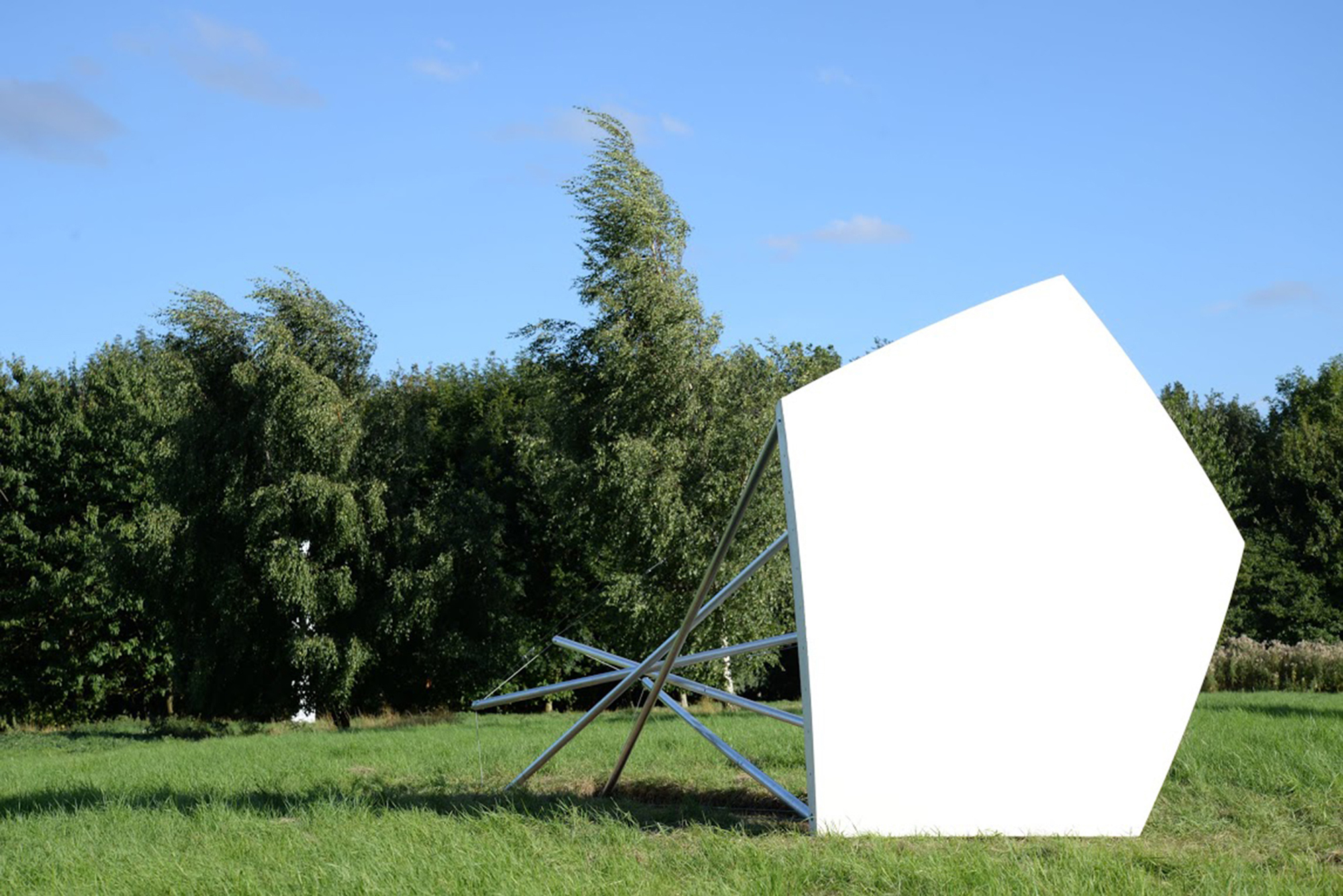Hyperdrone with Office of Experiments
Wysing, Cambridgeshire, UK2015

The HyperDrone / Hypersensor
Video: Field Experiment conducted at Wysing in July 2015.
What is a Hyperdrone / Hypersensor?
The title is given to the sculpture due to its multi-dimensional nature. As well as being an interplay of forms and materials, new and recycled elements, the work vibrates at resonant frequencies. The vibrations are created from sound waves generated by data taken from seismic (earthquake) sensors across the surface of the entire planet – the largest sensor in the world (that could be referred to as a ‘hyper object’). The work can be sensed in a number of ways, by sight or hearing, by touch or if stood in close proximity, felt through standing waves generated in the air and ground. It is inspired by La Monte Young’s work on immersive drone (sound) spaces.
The vibration that visitors experience originates from data taken from the Comprehensive Test Ban Treaty Organisation (CTBTO) which monitors the ground for nuclear explosions. The data used here was supplied by the Atomic Weapons Establishment Blacknest, Reading UK. This global sensing network is now contributing to an early warning earthquake system to allow for tsunami alerts data.
The main element of the sculpture is a section from a radome, a spherical structure used to cover satellite dishes by the military, shipping and scientific establishments.
Data from a range of seismic stations was requested from a UK partner in the CTBTO. This data was processed by composer, programmer and sound artist Anna Troisi before being carefully arranged to be played back to generate resonance in this structure – creating a ‘drone’ through the main panel of the work. The panel is held in tension by a resonating geometric ‘tensegrity’ structure. The sculpture was designed and made with artist Rob Smith during his artist residency at Wysing, where the first experimental Hyperdrone / Hypersensor was exhibited.
Resonating frequencies generated in the sculpture cause the optical sensor of the camera used to document the work to vibrate, generating waves in the video signal. This additional experimental outcome was observed during documentation when resting the camera onto the work. Similarly to the body that stands in proximity, it creates an embodied optical image of sculpture that uses data from an operational global sensor – the operational image.
Experimental Research
The project extends research undertaken into a global network of techno-scientific sites, from labs to observatories that support advances in human development; experimentation, scientific instruments, supercomputing advances etc. The sculpture is both material (radome panel) and immaterial (data/sound) that are phenomenal to our current condition, in which we can only experience events unfolding which are either too large or too small, through technological enhancement. The work is therefore extra-phenomenal as it relates to the senses.
This experiment is conceived as one node of a potentially global-scale, global sensing artwork. In this larger proposal, a network would be created to work with artists, architectural, scientific or social groups able to construct hyper drones that act together as a way of experiencing seismic or planetary reverb, in the context of our own relation to human perception of time, scale and event.
The Radome Panel was part of a golf ball shaped sphere used to cover military and industrial satellite dishes and radar – used to trace or work with near earth objects such as planes, GPS satellites etc. It was acquired for Steve Rowell (Member of Office of Experiments, 2010- ) for the project ‘Ultimate High Ground’, which was part of ‘Dark Places’, curated by Office of Experiments at John Hansard Gallery with Arts Catalyst and SCAN in 2009. The experiment has been developed so far with thanks to Wysing, Cambridgeshire UK and the Experimental Media Research Group at Bournemouth University.
Additional links;
Rob Smith, artist
Anna Troisi, composer and researcher
Office of Experiments; Experimental Fieldwork. A project led by Neal White with Rob Smith, artist and Anna Troisi, artist, composer and researcher. Radome Panel acquired by Steve Rowell, through his project Ultimate High Ground for Office of Experiments, 2009.